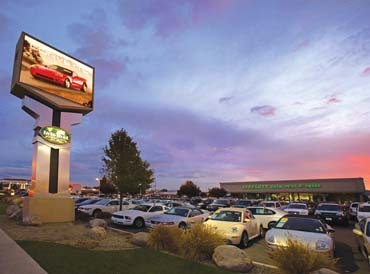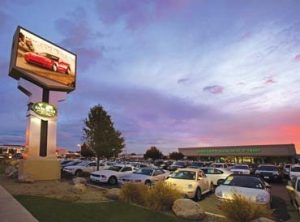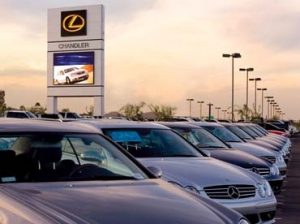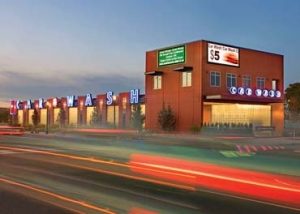Tremendous focus has been recently given to the new LED-based, electronic-digital signage (EDS) systems, as if they were something entirely new. Well-attended conferences held by The Strategy Institute and InterTech, plus the Outdoor Advertising of America (OAAA) Star Showcase, have prominently featured the "Digital Media" EDS systems as a rapidly growing, out-of-home media segment.
This column, and others like it, have chronicled this new age of display media as it has come into its own. (Editor's note: OAAA's Star Showcase [New York City], held on September 28, 2005, included more than 200 exhibitors and 400 attendees. The exclusive vendor's show featured products offered by numerous suppliers for the outdoor advertising-industry.)
Although these are very important and exciting times for display manufacturers, what does it mean to the average sign professional who serves local businesses?
Actually, it means a lot! The LED-based EDS business, until very recently, was a one-at-a-time phenomenon. Most moving-message displays sold as components of a custom sign, are designed and built for a specific location. Most of us who sell and produce displays still inhabit this world, and we anticipate inhabiting it in the future. How does the new LED signage affect us?
Volume drives down cost
The explosive growth of new displays, in such areas as outdoor advertising and chain-store retail, is creating a boom for some display manufacturers. High-volume production is replacing previous custom-manufacturing models. For the manufacturers, more consistent production creates a more efficient, leaner manufacturing process that allows lower-cost displays. Likewise, higher-volume purchases of LEDs, circuit boards and other components have helped reduce costs.
Advertisement
The cumulative effect of efficient production is a continual reduction in display cost. As the product price drops, the number of markets which can afford it, grows.
High-resolution demand for EDS
EDS competes for advertising dollars currently spent on print media, television and digitally imaged billboards. Although the large-format LED systems offer distinct advantages, their image resolution pales compared to other media. Advertisers are pushing the industry to improve display resolutions.
Because a large segment of LED-display manufacturing has focused on tighter pitch, the cost of higher-resolution units is dropping quickly. The result is greater availability of higher-resolution displays at lower costs.
Awareness and validation
An individual's reaction to a message-center sign has always been the greatest selling tool, so higher-resolution displays benefit by increased public acceptance. As high-resolution displays become more commonplace, the acceptance level will grow even more.
Advertisement
The new media measurement by such firms as Nielson and Arbitron, lends a legitimate medium's validation beyond the anecdotal success stories and testimonials we once relied upon.
Place-based media
Despite skyrocketing fuel costs, traffic counts on major thoroughfares continue to grow. Yet, logic dictates those costs will make us reluctant to drive greater-than-necessary distances. Today, the traffic that passes a business represents a potent audience for a place-based retailer.
Automobile dealerships are place-based businesses. A car dealership could be one of six in a metropolitan area that, by advertising in newspapers, television and radio, achieves broad coverage over the entire area. If, however, one dealership spends a portion of its ad dollars on an LED display that addresses the people driving by the business, it's speaking directly to its real customers.
Historically, as we sold place-based media, we encountered such major obstacles as poor image quality, poor performance and a price incompatible with other media options. Today, those obstacles are gone. Major advances in image quality and product dependability have made the old arguments moot.
The best time in history
Advertisement
The bottom-line, combined effects make this the best time in history to promote and sell moving-message signs to retailers. At this time, when all media are becoming more expensive and, simultaneously, more diluted, the cost of advertising on a programmable display is dropping.
The unprecedented focus on the LED-based EDS has accelerated a boom in manufacturing that has created better products, at better pricing, for sale in an environment that's more accepting than ever.
Customers are more aware of moving message's power. The market for buyers of custom signs with programmable displays now thrives. Media-measurement validation has lessened the advertising agencies' community resistance.
In addition to the automobile dealer, hotels, shopping centers, big-box stores, specialty retailers, convenience stores, bowling alleys, movie theaters, hospitals and law offices will benefit from the place-based display technology.
Our once small-closet industry has suddenly found itself in the limelight of a vibrant new medium. The past electronic message center has emerged as the future digital medium. That makes this the perfect time to prospect for new sales.
Good selling!


 Tip Sheet1 week ago
Tip Sheet1 week ago
 Photo Gallery1 day ago
Photo Gallery1 day ago
 Ask Signs of the Times3 days ago
Ask Signs of the Times3 days ago
 Real Deal1 week ago
Real Deal1 week ago
 Benchmarks6 days ago
Benchmarks6 days ago
 Editor's Note2 weeks ago
Editor's Note2 weeks ago
 Women in Signs1 week ago
Women in Signs1 week ago
 Photo Gallery1 week ago
Photo Gallery1 week ago


















